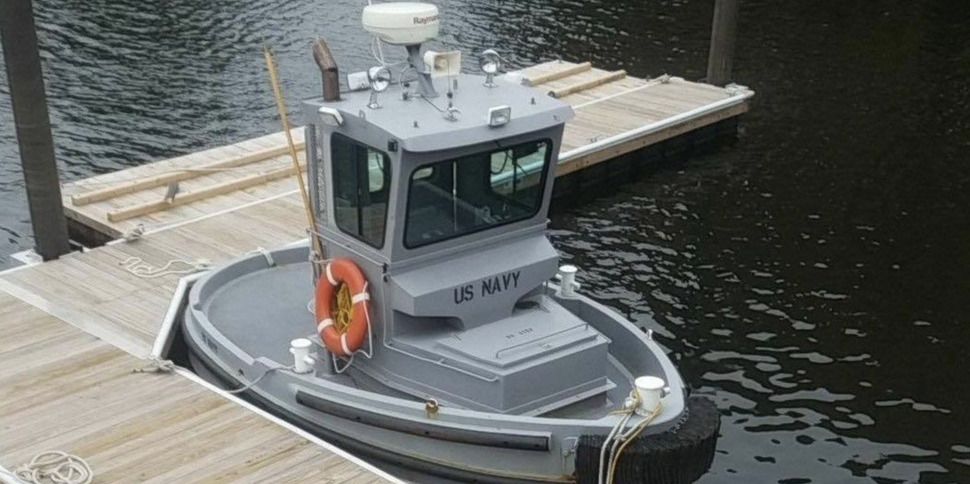Russia is holding its largest naval drills in the Pacific in recent memory as the U.S. Navy’s big RIMPAC wargames are underway.
Category: military – Page 173
DARPA Launches Project CHARIOT in Bid to Shield Big Tech Profits
DARPA announces a new type of cryptography to protect the Big Tech firm profits from the dawn of quantum computers and allow backdoor access into 3 trillion internet-connected devices.
by Raul Diego
The U.S. Military-Industrial complex is sprinting on a chariot to shore up the encryption space before the next era of computation upends the entire digital edifice built on semiconductors and transistors. But, the core of the effort is protecting markets for Big Tech and all of its tentacles, which stand to lose years or even decades of profits should the new tech be rolled out too quickly.

The US military is trying to read minds
Elon Musk’s Neuralink will likely show off its design for a brain-computer interface Friday evening. The concept it unveiled last summer involves surgically implanting it into the brain to detect the activity of neurons. The US military also wants to develop a brain-computer interface, as we explain in this story from October. But here’s the kicker: no surgery required—and the device could be put on and taken off like a helmet or headband.
In August, three graduate students at Carnegie Mellon University were crammed together in a small, windowless basement lab, using a jury-rigged 3D printer frame to zap a slice of mouse brain with electricity.
The brain fragment, cut from the hippocampus, looked like a piece of thinly sliced garlic. It rested on a platform near the center of the contraption. A narrow tube bathed the slice in a solution of salt, glucose, and amino acids. This kept it alive, after a fashion: neurons in the slice continued to fire, allowing the experimenters to gather data. An array of electrodes beneath the slice delivered the electric zaps, while a syringe-like metal probe measured how the neurons reacted. Bright LED lamps illuminated the dish. The setup, to use the lab members’ lingo, was kind of hacky.
Roaring tanks, fast-sailing cars, big bucks: Visitors flow to annual military expo near Moscow for brand new equipment & gear show
The business part of the expo is interesting as well. Army-2020 includes a record number of participating defense companies, which are showcasing over 28,000 products. The Russian Defense Ministry announced it has 39 contracts worth $15.6 billion ready to be signed during the forum. Participants are hunting for other potential buyers.
Army-2020, the annual defense expo where Russian arms producers show their gear to foreign clients and visitors, has started. Contracts worth billions are expected to be inked between tank races and other entertainment.
The week-long expo was launched on Sunday with a ceremony, but only opened to the general public on Monday. The forum is happening at Patriot Park near the Russian capital. A record number of journalists – over 750 – are covering the event.


US defense officials eyeing potential threat of coronavirus as bioweapon
Basically it behaves like a bioweapon as it has a spread that has encompassed the earth.
US intelligence officials are probing the possibility that America’s enemies might use the coronavirus as a bioweapon, according to an alarming report.
The Department of Defense is monitoring for the potential of the virus to be weaponized, possibly against prominent, high-level targets, three people close to the matter told Politico.
A Pentagon spokesman, Lt. Col. Mike Andrews, declined to comment on whether Department of Defense officials were analyzing COVID-19 weaponization, but said its Chemical and Biological Defense program continues to support federal coronavirus countermeasures such as testing, vaccines and screening machines.


US announces $1 billion research push for AI and quantum computing
It’s extremely difficult to make a fair comparison of US and Chinese spend on technology like AI as funding and research in this area is diffuse. Although China announced ambitious plans to become the world leader in AI by 2030, America still outspends the country in military funding (which increasingly includes AI research), while US tech companies like Google and Microsoft remain world leaders in artificial intelligence.
The Trump administration will likely present today’s news as a counterbalance to its dismal reputation for supporting scientific research. For four years in a row, government budgets have proposed broad cuts for federal research, including work in pressing subjects like climate change. Only the fields of artificial intelligence and quantum computing, with their overt links to military prowess and global geopolitics, have seen increased investment.
“It is absolutely imperative the United States continues to lead the world in AI and quantum,” said US Chief Technology Officer Michael Kratsios ahead of today’s announcement, according to The Wall Street Journal. “The future of American economic prosperity and national security will be shaped by how we invest, research, develop and deploy these cutting edge technologies today.”

PredaSAR successfully completes Critical Design Review to launch world’s largest SAR satellite constellation
PredaSAR has successfully completed its Critical Design Review (CDR) to begin fabrication, testing and launch of its Synthetic Aperture Radar (SAR) spacecraft, in partnership with Tyvak Nano-Satellite Systems. PredaSAR is building and will operate what is predicted to be the world’s largest and most advanced constellation of SAR satellites. The successful CDR completion marks another major milestone in PredaSAR’s journey and follows its recent announcement of a rideshare partnership with SpaceX to launch its first satellite aboard the Falcon 9 launch vehicle.
PredaSAR spacecraft employ an advanced, proprietary radar payload to create 2D Synthetic Aperture Radar images, 3D reconstructions of objects and the Earth’s surface, and customer-tailored data products. SAR satellites provide high-resolution images at any time of day and in any weather condition, overcoming natural limitations of traditional optical satellites. PredaSAR spacecraft possess the latest in space-proven, high quality satellite systems to support scalable and fully capable operations in any low earth orbit. Leveraging its advanced technologies, PredaSAR will deliver critical insights and data products to military and commercial decision makers at the speed of need.
PredaSAR completes Critical Design Review to begin largest SAR satellite constellation — SpaceWatch. Global.

This Little Baby Boat May Be the Smallest Ship in the Navy
An adorable little tugboat as long as a Ford F-150 is making the rounds on social media, prompting many to call it the “smallest ship in the U.S. Navy.”
At just 19 feet long, the boat is actually “Boomin Beaver” security tug. Originally built to herd logs in waterways, the Navy boat is now an all-purpose vessel that can tow small ships and deploy floating security fences, ensuring that larger submarines, destroyers, and even aircraft carriers don’t receive unwanted visitors.
⚓️ You like badass boats (no matter how small). So do we. Let’s nerd out over them together.